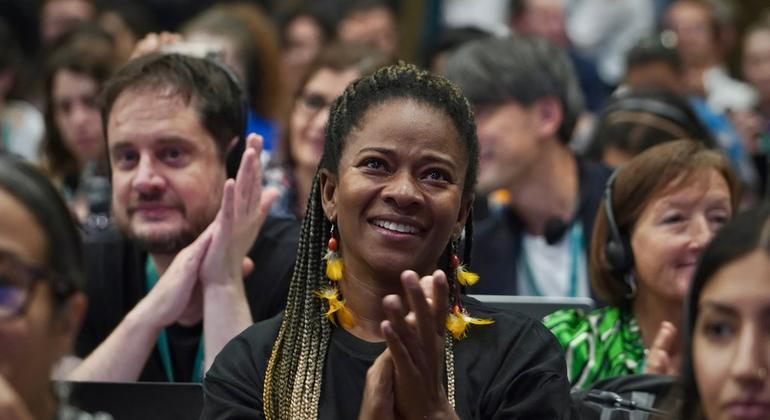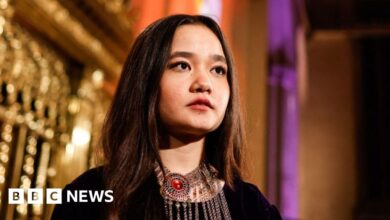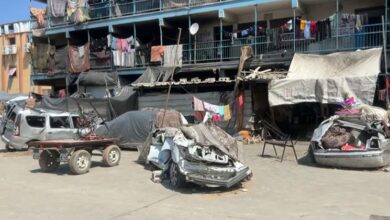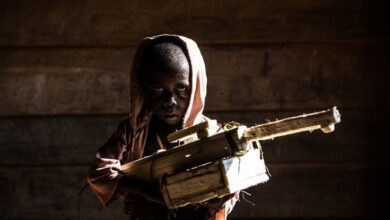COP16: Landmark biodiversity agreement adopted

“This is an unprecedented occasion in the history of multilateral environmental agreements,” said Camila Paz Romero, spokesperson for Indigenous Peoples at the summit. UN News.
“Indigenous peoples and local communities around the world – connected by our knowledge systems in caring for life and biodiversity – remember how long we have come this agreement.”
Efforts to get a seat at the negotiating table have spanned three decades.
In Cali, the summit, officially known as the 16th Conference of the Parties to the United Nations Convention on Biological Diversity, ended after 12 days of heated discussions among 170 delegations, according to Colombian Ministry of Environment and Sustainable Development.
The central objective of the Convention, adopted by 196 countries in 1992, is to promote measures towards a sustainable future.

COP16’s recognition of Indigenous Peoples as stewards of nature protection is unprecedented in the history of multilateral environmental agreements.
‘Standard for the world’
The agreement was reached after lengthy debates and discussions at the conclusion of COP16, helping indigenous and African peoples and their communities to be recognized as actors in biodiversity conservation, and to decided to establish an auxiliary body for them in accordance with article 8J of the convention.
Ms. Paz said: “This new subsidiary body is a benchmark for the rest of the world, in which parties recognize the ongoing need for our full and effective participation, knowledge , innovation, technology and traditional practices to meet the objectives of the convention”. .
That article specifically stipulates that each contracting state must respect, preserve and maintain the knowledge, innovations and practices of indigenous and local communities that embody traditional ways of life related to conservation and sustainable use of biodiversity.
New decision-making authority
This newest affiliated body will become a permanent space for indigenous peoples and local communities to participate in biodiversity decision-making.
That space will also strengthen dialogue between countries and indigenous peoples and local communities as a way to identify actions that contribute to protecting nature.
Two other affiliated agencies participating in COP16 are the scientific, technical and technological advisory agency, which conducts assessments of the current state of biodiversity, and the implementing agency, which makes recommendations on technical and science in implementing the convention.
Nature’s first global genetic data
In another first, COP16 delegates decided to establish a global fund to gather economic resources from the use of digital sequence information – genetic code that comes from commonly used biological samples. digital sharing – and its fair, equitable distribution.
Companies that use this information to develop products will therefore have to allocate a portion of their profits to the Cali Fund, from which resources will be allocated to Indigenous Peoples and local communities, directly or through the government.
Benefit sharing will also consider criteria such as national conservation needs and biodiversity richness.
Issues remain on the table
However, two issues remain unresolved, both of which are instrumental in implementing the Kunming-Montreal Global Biodiversity Framework, a global plan adopted during COP15 in Canada to prevent and Reverse biodiversity loss by 2030.
One is the lack of definition of a financial model to turn biodiversity protection plans into reality. Calculations indicate that $700 billion is needed to implement this framework.
Another issue that remains is the monitoring mechanism to measure countries’ progress in complying with the biodiversity protection roadmap.
Towards the end of the summit, discussions on these issues were suspended because there were no longer enough negotiators present to reach an agreement.
People’s COP
According to Colombian Environment Minister Susana Muhamad, on the sidelines of the summit, a “green zone” was established for civil society groups. She said about 40,000 people attended related activities and the area attracted about a million visitors.
“In short, this is the people’s COP,” Ms. Muhamad said.
“The ‘peace with nature’ coalition was created and was able to mobilize the most important educational campaign Colombia has ever had in its history and saw so many people excited about biodiversity.”




